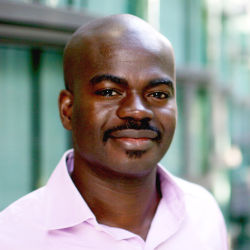Communications of the ACM
New Frontiers: The Nanoscience/neuroscience Intersection

"I hope that this is a two-way street," says Kavli Institute Co-Director Nicholas Spitzer.
Credit: Nicholas Spitzer
Is it possible to build supercomputers that can replicate the human brain, or to develop nanotechnology that can lead to an implantable chip for interfacing with neurons and other types of cellular networks?
Once divergent fields, nanoscience and neuroscience are now advancing each other in ways that could propel extraordinary new research. Just what this means was the topic of an hour-long conversation recently led by neuroscientist Nicholas Spitzer. A transcript of the conversation with researchers Kwabena Boahen and Hongkun Park is at http://www.kavlifoundation.org/Spitzer-Boahen-Park.
Professor of Neurobiology and Co-Director of the Kavli Institute for Brain and Mind at the University of California, San Diego, Spitzer is responsible for groundbreaking studies into the activity and development of neurons and neuronal networks that span more than four decades. Spitzer explored this scientific intersection with two pioneering researchers in nanoscience:
 Stanford's Kwabena Boahen Credit: Michael Halaas Stanford's Kwabena Boahen Credit: Michael Halaas |
- Kwabena Boahen, Associate Professor of Bioengineering at Stanford University, who is using silicon integrated circuits to emulate the way neurons compute, bridging electronics and computer science with neurobiology and medicine. At Stanford, his research group is developing "Neurogrid," a hardware platform that will emulate the cortex's inner workings. Boahen won the NIH Director's Pioneer Award in 2006 and is presently participating in the Office of Naval Research;s Young Investigator Program and the National Science Foundation's Faculty Early Career Program.
- Hongkun Park, Professor of Chemistry and of Physics at Harvard University, who is known for his work in developing computing technology modeled after the human brain and nervous system. Park is pushing the frontiers of nanotechnology by developing devices capable of probing and manipulating individual neurons.
In a far-reaching dialogue, the researchers discussed the synergy between nanoscience and neuroscience, what it means for the future, and how it is driving their current research—ranging from the development of a "Neurogrid" hardware platform that would emulate the cortex's inner workings, to creating nanowire platforms for administering biochemicals to cells.
No entries found